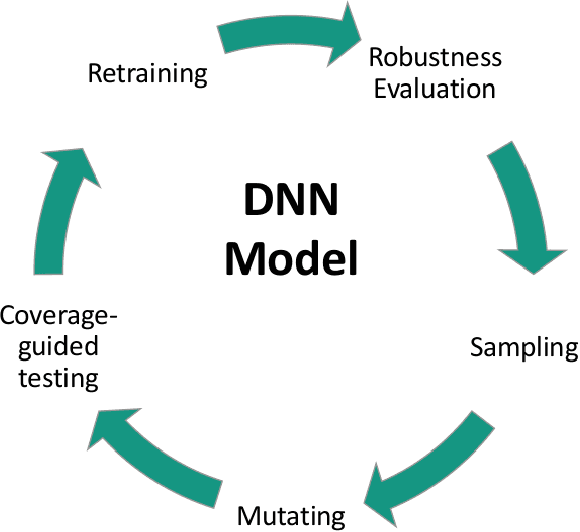Şiyar Yıkmış
Is Neuron Coverage Needed to Make Person Detection More Robust?
Apr 21, 2022



Abstract:The growing use of deep neural networks (DNNs) in safety- and security-critical areas like autonomous driving raises the need for their systematic testing. Coverage-guided testing (CGT) is an approach that applies mutation or fuzzing according to a predefined coverage metric to find inputs that cause misbehavior. With the introduction of a neuron coverage metric, CGT has also recently been applied to DNNs. In this work, we apply CGT to the task of person detection in crowded scenes. The proposed pipeline uses YOLOv3 for person detection and includes finding DNN bugs via sampling and mutation, and subsequent DNN retraining on the updated training set. To be a bug, we require a mutated image to cause a significant performance drop compared to a clean input. In accordance with the CGT, we also consider an additional requirement of increased coverage in the bug definition. In order to explore several types of robustness, our approach includes natural image transformations, corruptions, and adversarial examples generated with the Daedalus attack. The proposed framework has uncovered several thousand cases of incorrect DNN behavior. The relative change in mAP performance of the retrained models reached on average between 26.21\% and 64.24\% for different robustness types. However, we have found no evidence that the investigated coverage metrics can be advantageously used to improve robustness.
 Add to Chrome
Add to Chrome Add to Firefox
Add to Firefox Add to Edge
Add to Edge